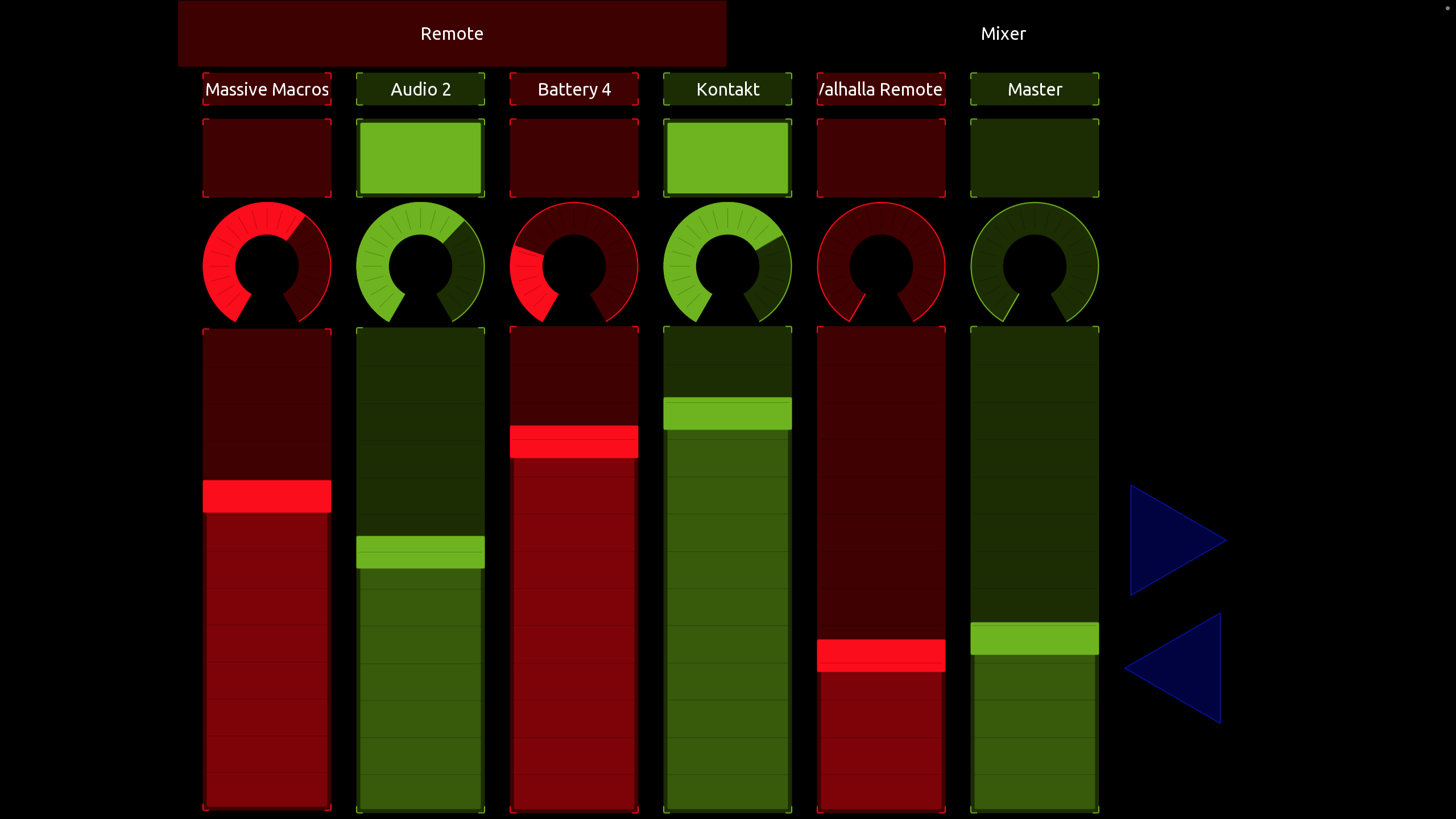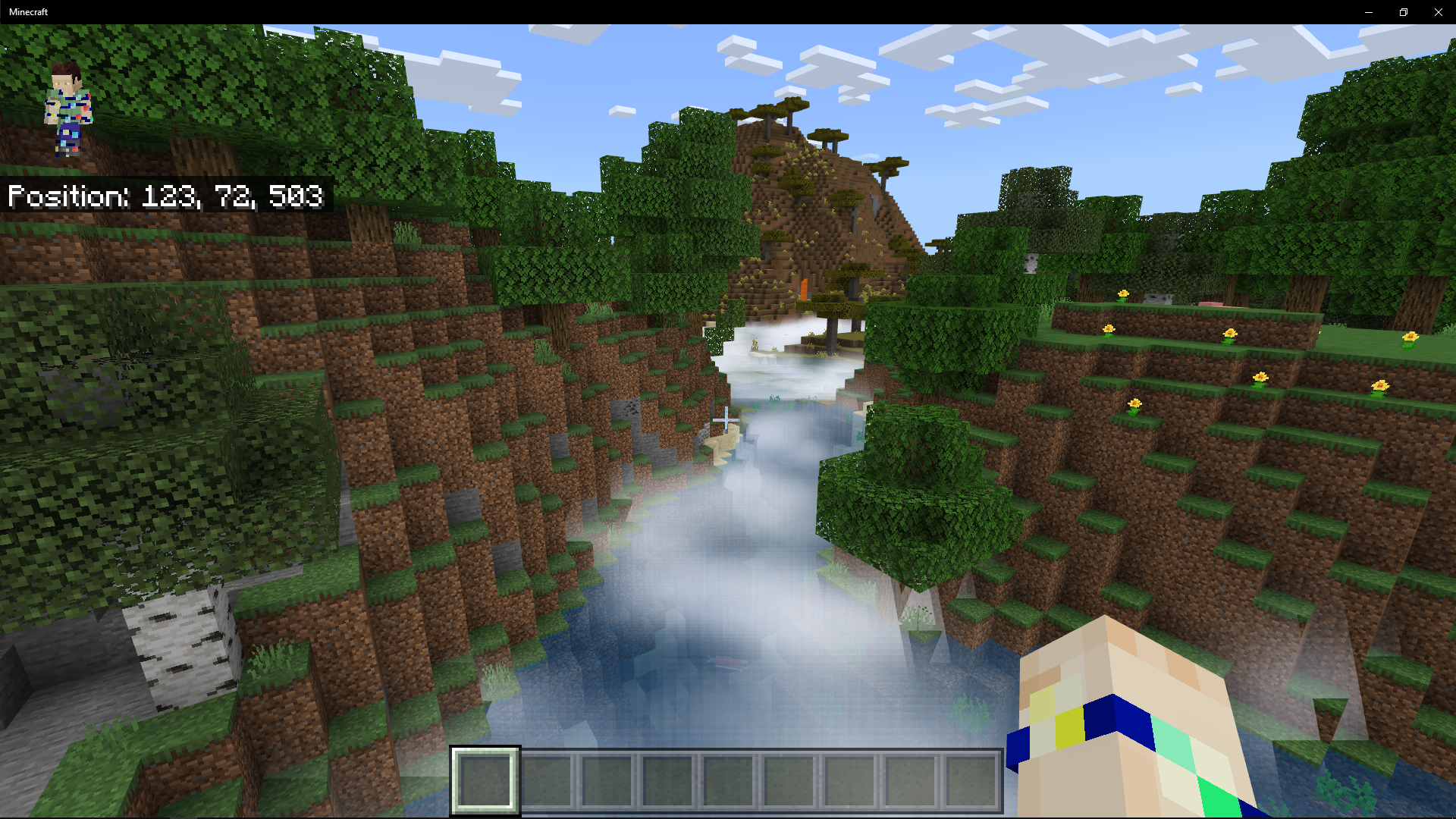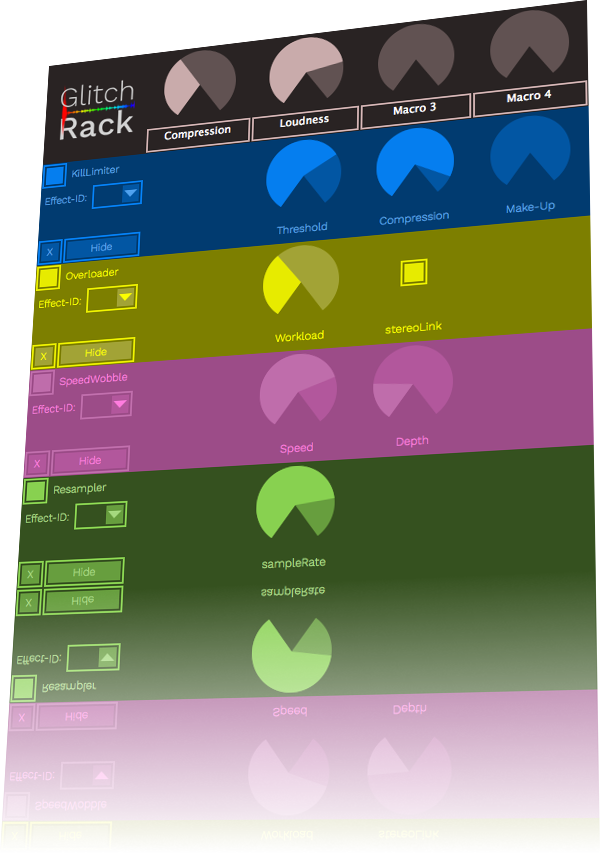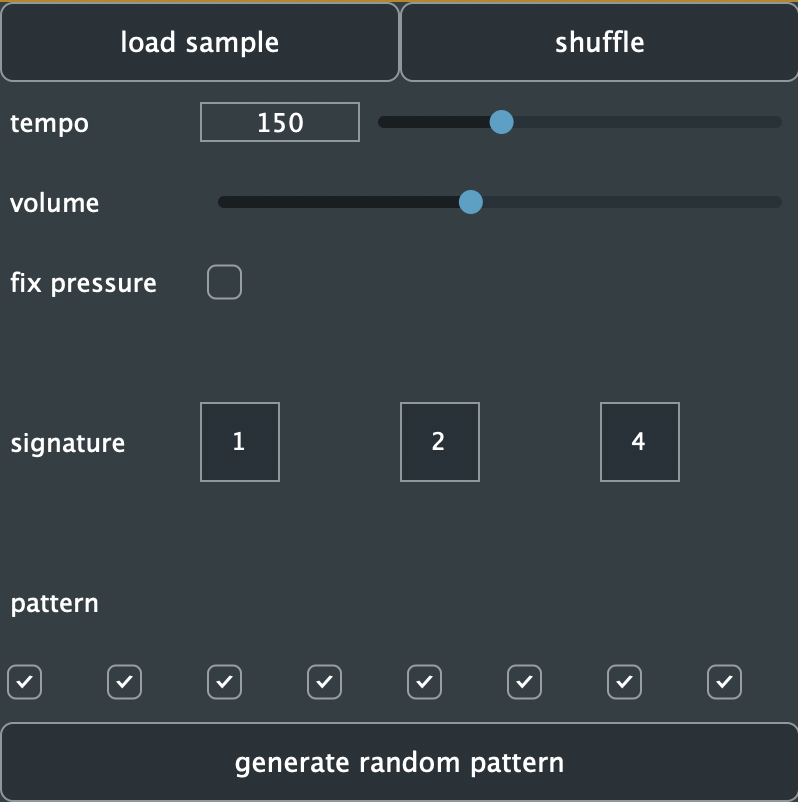Software
TouchOSC X Bitwig

For most of my live performance I use Bitwig. One of the main reasons for this is the fact that you can code plugins using JavaScript. During these performances I like to have a mixer handy, but given that hardware mixers are always pretty expensive I decided to go for software. Since I like to touch stuff with my hands and not my mouse, I decided to use TouchOSC for iPad.
To not lose track of which fader corresponds to what track, the track names should also be visible. In order to keep the setup simple, everything is done purely with MIDI. No OSC setup required. Just plug in the cable and start performing.
The source code and TouchOSC file is available on GitHub. I use it quite often during my live performances on twitch this plugin is under somewhat active development. Since I designed it specifically for my setup it may not suit everyone, but it still may be a good starting point for your own development.
Fog for Minecraft

So my little brother and I play Minecraft now and then. That one time, he complained about there not being any fog in the game. That's basically the whole story of this Plugin.
So if you want to have Fog in your Minecraft server, feel free to download. Last time I tested it was on version 17 or whatever and I am not developing it actively anymore, so it may not work anymore. But given that I coded it using the new framework Microsoft developed for this purpose it is likely to be supported for the next few versions.
The plugin and installation instructions are available on my GitHub page.
GlitchRack

The idea for the GlitchRack was born as part of a semester project in music informatics. Our assignment was easy enough to create a simple instrument or effect we want. I found that the market place for musical software and effect was quiet overfilled with effects that make music better and better. Most effects and instruments that can be found nowadays are basically all the same in different combinations, faster algorithms or even just other presets, all with the goal to make music sound perfect without putting to much work into it. But since I myself prefer music that does NOT sound perfect and even broken or destroyed, I wanted to create a palette of effects that could be used for exactly these purposes. Furthermore I wanted to challenge myself do code a complete vst plugin from scratch, since most of the developing environments we learned at the university are always restricted to certain frameworks like pureData, Max MSP or JavaScript and the p5 library.
So I coded the software in C++ using the JUCE-Framework and therefore being able to export it as plugins for various DAW and as a platform independent Standalone version. More information about the GlitchRack can be found here.
The GlitchRack is available on the KVR Marketplace
PercussiveCloud

When playing or writing music I like to use glitchy aesthetics, digitally corrupted sounds and faulty riffs. Especially when it comes to percussive- or one shot sounds, i like using samples that don't necessarily resemble anything commonly known. Although creating such sounds might not be particularly hard, it sometimes can be a tedious task when it comes to pitch shifting for creating a melody. Even more so when such a riff is supposed to sound random and you have to create multiple samples for the same note to have that variety.
With me being a programmer for some time now I thought: "No, this is a task that should be automated and not done by hand". This is how I got the idea to write a plugin to create these sounds.
The PercussiveCloud can load any audio file (wav). This sound determines the general characteristics of the result. Per default, an explosion sample will load, which creates an extremely overdriven, distorted noise. When a sound has been loaded, it is cut into 8 different, really short pieces at random. When sending a midi note to the plugin, all 8 sounds are played consecutively at a certain speed and signature (both can be changed). This creates a rhythmic percussive line. To create a more interesting pattern, some of the sounds can be skipped. Furthermore upon playing, all sounds are speed up to be at a pitch that roughly matches the height of the note that has been send to the plugin. This way, the pattern can be played as a melody.
A more detailed explanation and description on how to use this plugin can be found here whereas the plugin itself can be downloaded here. (MAC only, be sure to check out the aforementioned description).
If you just want to check out how it sounds, you can check out this little track. It was part of a semester assignment for the course film music, so it is pretty short, but it uses the percussive cloud a lot.
I also used this instrument for the menu music in the game "Vertical Slice"
